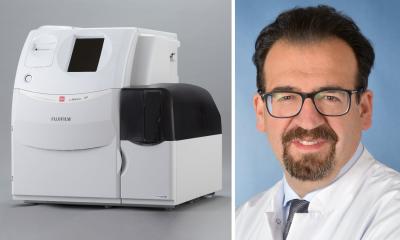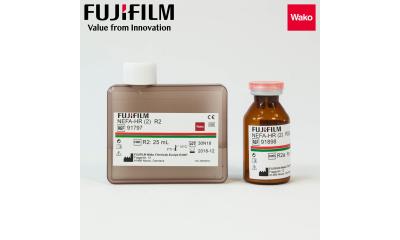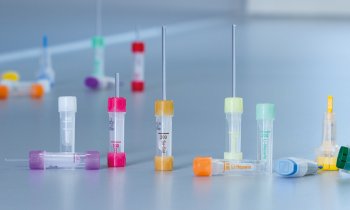Sponsored • Fungal testing
One test winning over a run of 10 New β-Glucan test delivers rapid results
Fungal testing plays a critical role in patient care. However, the turnaround for results can be lengthy because the existing tests need 10 samples in a run. Professor Maurizio Sanguinetti, Professor of Microbiology at the Catholic University of the Sacred Heart (Università Cattolica del S. Cuore), in Rome, Italy, is comparing the results of a new test with those from existing tests.
Created by the diagnostic division of FUJIFILM Wako, the new β-Glucan Test aims at delivering rapid results from just one test of (1 → 3)-β-D-glucan. β-glucan is a fungal cell wall component that circulates in the affected patients’ blood. The ability to detect β-glucan in serum therefore helps to diagnose fungal infections.
Test for high-risk patients
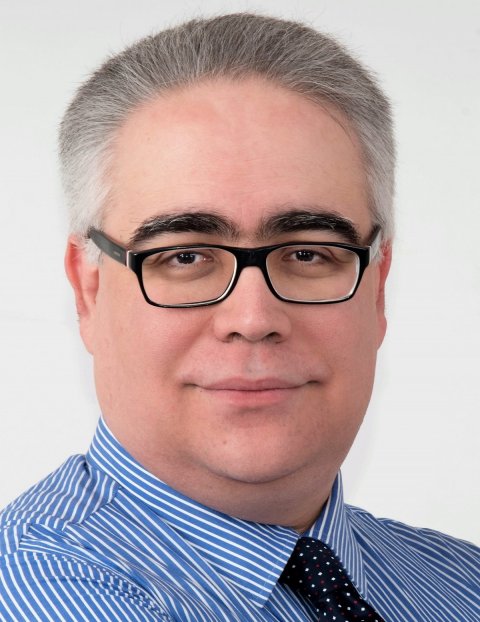
Sanguinetti and team have used β-glucan testing at the university hospital for many years to check patients at risk of fungal infections, particularly candidemia (or fungaemia), which is caused by candida species; infections by saccharomyces, aspergillus and cryptoccous are also fungaemia. Patients who are immunosuppressed, or immunocompromised with severe neutropenia, cancer patients or those with intravenous catheters are more at risk of these. “We use this to screen patients with a risk of candidemia in ICU in particular,” Sanguinetti explained. “If the result is negative, the anti-fungal therapy is not implemented but, if the test is positive, then the therapy is considered. This is very important because by using this approach we save a lot of inappropriate therapies for this type of patient and also save money by reducing consumption of candids, which is a class of anti-fungals. A single, generic dose, for example, costs € 45-50.”
Haematology patients at risk of fungal infection are tested for the presence of galactomannan and β-glucan, with galactomannan being a specific test for aspergillosis, but the process can also highlight the presence of pneumocystis in Aids patients. “Sometimes we identify haematological patients with very high levels (500+) of β-glucan and these patients are almost always positive for pneumocystis,” he added. The implementation of β-glucan testing is being extended in the Catholic University of the Sacred Heart hospital for non-ICU patients including those on general medical and surgical wards, which brings in other complexities with the use of gauze and immuno-compromising therapies.
While such use of the biomarker is in its early stages, data so far indicates that the test is a useful guide to the introduction of anti-fungal therapy in those areas. Sanguinetti, who is also President Elect and Secretary General of ESCMID (European Society of Clinical Microbiology and Infectious Diseases) and Chief of the Department of Laboratory Sciences and Infectious Diseases, added that abdominal surgery is a common procedure at the hospital but is an area where patients are at risk of candidemia, while patients with rheumatological diseases such as lupus, are also at risk of fungal infections and aspergillosis.
Monotest advantage in emergencies
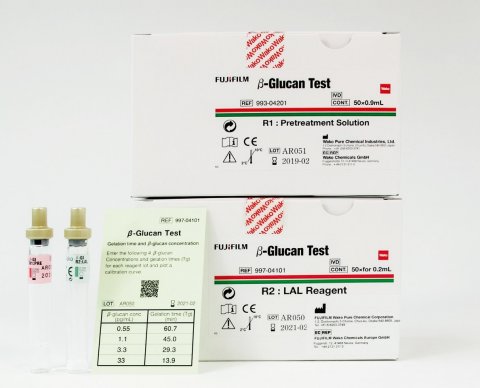
With the new Fujifilm Wako turbidimetric assay, he said there are technical advantages, in particular that the test is always available with results obtained within one hour. “The most important advantage for the Fujifilm Wako test,” he added, “is that it is possible to perform a single test. These tests are especially useful in emergency situations. This is not possible for the Fungitell test because we need to include at least ten samples in the run. With Fujifilm Wako, it is possible to include a single test – a huge advantage for the lab and clinician.”
The new test is also advantageous for hospitals that do not work directly with labs, or those needing an immediate result from an emergency patient, or those hospitals with not so many requests for β-glucan. As Sanguinetti points out, “If I need to perform only two tests a day, which is possible in a small hospital, these can be perfectly performed by the Fujifilm Wako test.”
Profile:
Maurizio Sanguinetti is Professor of Microbiology at Catholic University of the Sacred Heart (Università Cattolica del S. Cuore) in Rome, Italy, as well as President Elect and Secretary General of ESCMID (European Society of Clinical Microbiology and Infectious Diseases); and head of the Department of Laboratory Sciences and Infectious Diseases.
02.09.2018



